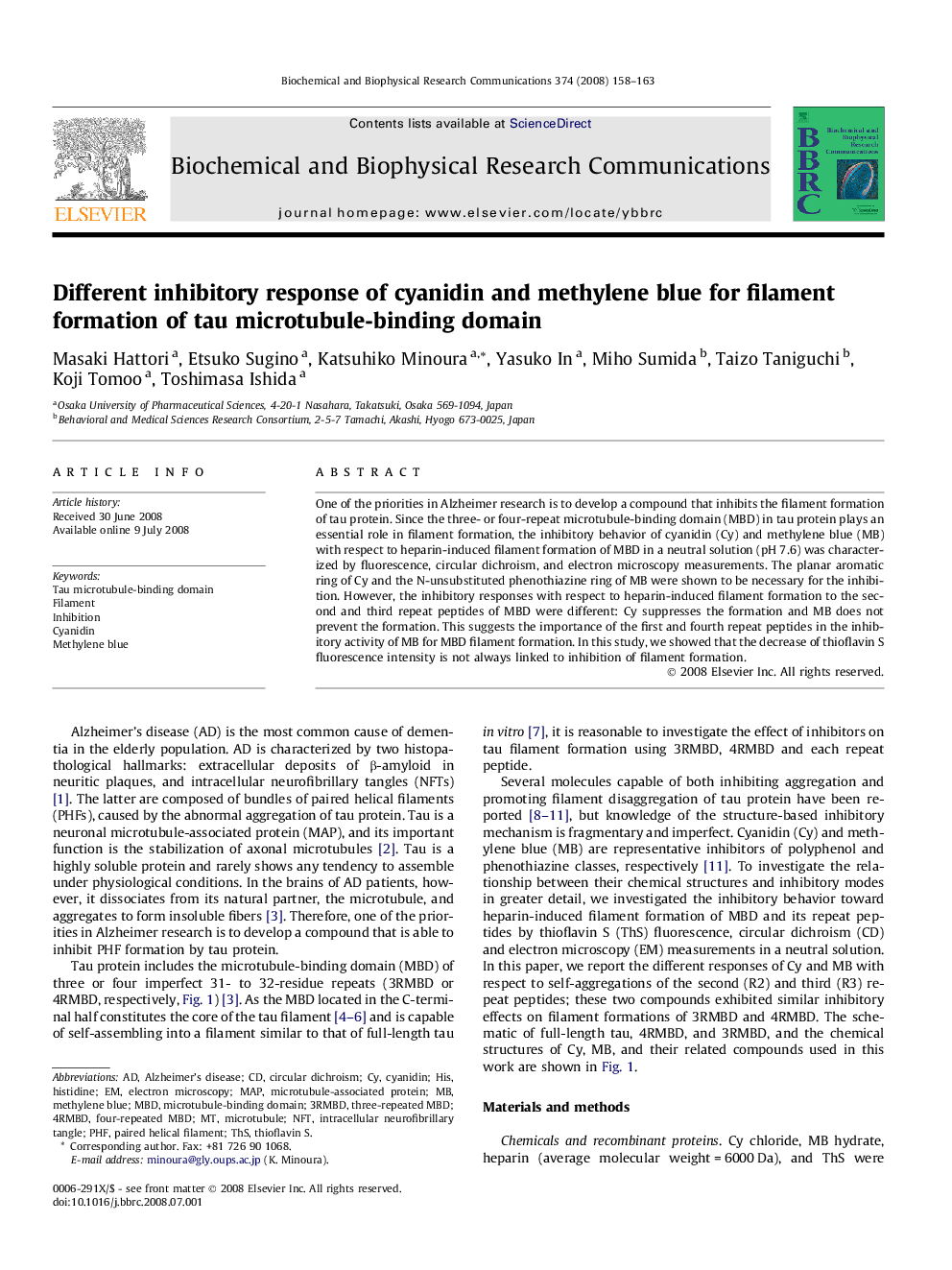| Article ID | Journal | Published Year | Pages | File Type |
|---|---|---|---|---|
| 10766618 | Biochemical and Biophysical Research Communications | 2008 | 6 Pages |
Abstract
One of the priorities in Alzheimer research is to develop a compound that inhibits the filament formation of tau protein. Since the three- or four-repeat microtubule-binding domain (MBD) in tau protein plays an essential role in filament formation, the inhibitory behavior of cyanidin (Cy) and methylene blue (MB) with respect to heparin-induced filament formation of MBD in a neutral solution (pH 7.6) was characterized by fluorescence, circular dichroism, and electron microscopy measurements. The planar aromatic ring of Cy and the N-unsubstituted phenothiazine ring of MB were shown to be necessary for the inhibition. However, the inhibitory responses with respect to heparin-induced filament formation to the second and third repeat peptides of MBD were different: Cy suppresses the formation and MB does not prevent the formation. This suggests the importance of the first and fourth repeat peptides in the inhibitory activity of MB for MBD filament formation. In this study, we showed that the decrease of thioflavin S fluorescence intensity is not always linked to inhibition of filament formation.
Keywords
Related Topics
Life Sciences
Biochemistry, Genetics and Molecular Biology
Biochemistry
Authors
Masaki Hattori, Etsuko Sugino, Katsuhiko Minoura, Yasuko In, Miho Sumida, Taizo Taniguchi, Koji Tomoo, Toshimasa Ishida,
